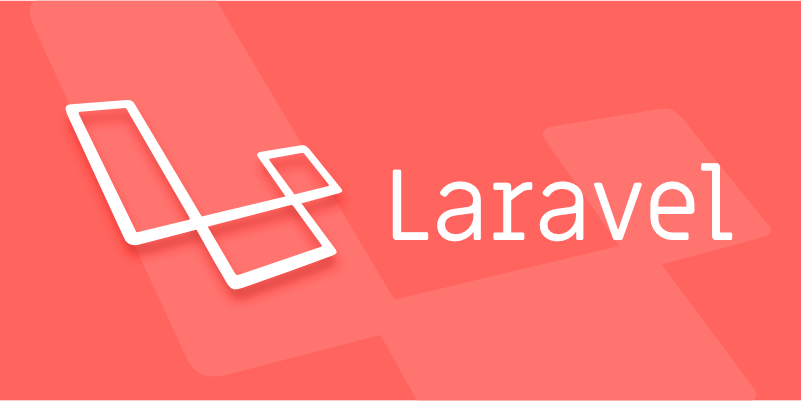How to optimize database queries in Laravel?
Jul 31, 2025 am 01:21 AMUse eager loading with with() to prevent N 1 queries by loading relationships in a single query instead of multiple. 2. Select only required fields using select('column') to reduce memory and improve speed. 3. Cache frequently accessed, rarely changed data with Cache::remember() and invalidate when needed. 4. Always paginate large datasets using paginate() or cursorPaginate() to avoid memory overload. 5. Index database columns used in WHERE, JOIN, ORDER BY, and foreign key constraints to speed up lookups. 6. Apply filters at the database level using where instead of filtering collections in PHP. 7. Use exists() for checking record existence and count() for totals instead of loading data into memory. 8. Optimize complex queries with Query Builder or raw expressions when Eloquent is too slow. 9. Monitor queries using Laravel Debugbar or Telescope to detect performance issues during development. 10. Offload heavy operations to queues and cache results to avoid repeated expensive computations on each request.

Optimizing database queries in Laravel is essential for building fast, scalable applications. Poorly written queries can slow down your app, especially as data grows. Here’s how to make your Laravel queries more efficient.

1. Use Eager Loading to Avoid N 1 Queries
One of the most common performance issues in Laravel is the N 1 query problem. This happens when you loop through a collection and load a relationship for each item, triggering multiple database queries.
Bad Example:

$posts = Post::all();
foreach ($posts as $post) {
echo $post->user->name; // Triggers a query for each post
}Fix with Eager Loading:
$posts = Post::with('user')->get(); // Loads all users in one query
foreach ($posts as $post) {
echo $post->user->name;
}Use with() to load relationships upfront. For nested relationships:

Post::with('user', 'comments.user')->get();You can also use lazy eager loading when needed:
$posts->load('comments');2. Select Only the Fields You Need
By default, select * retrieves all columns. If you only need a few fields, specify them explicitly.
Instead of:
User::all();
Do:
User::select('id', 'name', 'email')->get();Or use addSelect() when building complex queries:
$query->addSelect('id', 'name');This reduces memory usage and speeds up queries, especially on large tables.
3. Use Query Caching When Appropriate
For data that doesn’t change often, cache query results to avoid hitting the database repeatedly.
$users = Cache::remember('users.active', 3600, function () {
return User::where('active', 1)->get();
});Use caching for:
- Static content (e.g., categories, settings)
- Dashboard stats
- API responses with low volatility
Just remember to invalidate the cache when data changes.
4. Optimize Pagination and Avoid Loading Large Datasets
Loading thousands of records at once can crash your app. Always paginate large datasets.
Use:
$users = User::paginate(15);
Instead of:
User::all(); // Dangerous with large data
For better performance on deep pagination, consider cursor pagination:
$users = User::orderBy('id')->cursorPaginate(15);It uses a cursor (based on order) instead of offset, which avoids OFFSET performance issues.
5. Index Database Columns Used in Queries
Even the best Laravel code can’t fix a missing database index. Make sure to index columns used in:
WHEREclausesJOINsORDER BY- Foreign keys
For example, in a migration:
$table->index('email');
$table->index('created_at');Use composite indexes for multi-column queries:
$table->index(['status', 'created_at']);
6. Use Query Constraints Instead of Filtering in PHP
Avoid fetching more data than needed and filtering in PHP.
Bad:
$posts = Post::all()->where('status', 'published');This loads all posts into memory, then filters.
Good:
$posts = Post::where('status', 'published')->get();Always filter at the database level using where, whereIn, whereHas, etc.
7. Use exists() and count() Instead of get()
If you only need to check existence or count, don’t load the entire dataset.
Instead of:
if (User::where('active', 1)->get()->count() > 0)Use:
if (User::where('active', 1)->exists()) // Fastest for existenceOr:
$count = User::where('active', 1)->count(); // Efficient countThese translate to EXISTS and COUNT(*) in SQL, which are much faster.
8. Optimize Complex Queries with Query Builder or Raw Expressions
Sometimes Eloquent is too heavy. For complex reports or aggregations, switch to the Query Builder:
DB::table('users')
->selectRaw('count(*) as user_count, status')
->groupBy('status')
->get();Or use raw expressions carefully:
->select(DB::raw('YEAR(created_at) as year'))Avoid raw queries unless necessary, but know they can be faster for analytics.
9. Monitor Queries with Laravel Debugbar or Telescope
Use tools to detect slow or duplicated queries.
- Laravel Debugbar: Shows all queries on the page, execution time, and N 1 warnings.
- Laravel Telescope: Logs queries, allows filtering, and helps spot bottlenecks.
Enable them in local environment to audit performance.
10. Consider Using Caching Queues for Heavy Operations
For reports or complex aggregations, don’t compute on every request.
- Cache the result
- Or run the query via a queue and store the result
Example:
$stats = Cache::remember('daily.stats', 1800, function () {
return generateExpensiveStats();
});Basically, optimizing Laravel queries comes down to:
- Avoiding N 1 with
with() - Selecting only what you need
- Indexing the right columns
- Caching when possible
- Letting the database do the work
It’s not magic — just smart querying and awareness of what’s happening behind the scenes.
The above is the detailed content of How to optimize database queries in Laravel?. For more information, please follow other related articles on the PHP Chinese website!

Hot AI Tools

Undress AI Tool
Undress images for free

Undresser.AI Undress
AI-powered app for creating realistic nude photos

AI Clothes Remover
Online AI tool for removing clothes from photos.

Clothoff.io
AI clothes remover

Video Face Swap
Swap faces in any video effortlessly with our completely free AI face swap tool!

Hot Article

Hot Tools

Notepad++7.3.1
Easy-to-use and free code editor

SublimeText3 Chinese version
Chinese version, very easy to use

Zend Studio 13.0.1
Powerful PHP integrated development environment

Dreamweaver CS6
Visual web development tools

SublimeText3 Mac version
God-level code editing software (SublimeText3)

Hot Topics
 How to set environment variables in PHP environment Description of adding PHP running environment variables
Jul 25, 2025 pm 08:33 PM
How to set environment variables in PHP environment Description of adding PHP running environment variables
Jul 25, 2025 pm 08:33 PM
There are three main ways to set environment variables in PHP: 1. Global configuration through php.ini; 2. Passed through a web server (such as SetEnv of Apache or fastcgi_param of Nginx); 3. Use putenv() function in PHP scripts. Among them, php.ini is suitable for global and infrequently changing configurations, web server configuration is suitable for scenarios that need to be isolated, and putenv() is suitable for temporary variables. Persistence policies include configuration files (such as php.ini or web server configuration), .env files are loaded with dotenv library, and dynamic injection of variables in CI/CD processes. Security management sensitive information should be avoided hard-coded, and it is recommended to use.en
 How to make PHP container support automatic construction? Continuously integrated CI configuration method of PHP environment
Jul 25, 2025 pm 08:54 PM
How to make PHP container support automatic construction? Continuously integrated CI configuration method of PHP environment
Jul 25, 2025 pm 08:54 PM
To enable PHP containers to support automatic construction, the core lies in configuring the continuous integration (CI) process. 1. Use Dockerfile to define the PHP environment, including basic image, extension installation, dependency management and permission settings; 2. Configure CI/CD tools such as GitLabCI, and define the build, test and deployment stages through the .gitlab-ci.yml file to achieve automatic construction, testing and deployment; 3. Integrate test frameworks such as PHPUnit to ensure that tests are automatically run after code changes; 4. Use automated deployment strategies such as Kubernetes to define deployment configuration through the deployment.yaml file; 5. Optimize Dockerfile and adopt multi-stage construction
 How to develop AI intelligent form system with PHP PHP intelligent form design and analysis
Jul 25, 2025 pm 05:54 PM
How to develop AI intelligent form system with PHP PHP intelligent form design and analysis
Jul 25, 2025 pm 05:54 PM
When choosing a suitable PHP framework, you need to consider comprehensively according to project needs: Laravel is suitable for rapid development and provides EloquentORM and Blade template engines, which are convenient for database operation and dynamic form rendering; Symfony is more flexible and suitable for complex systems; CodeIgniter is lightweight and suitable for simple applications with high performance requirements. 2. To ensure the accuracy of AI models, we need to start with high-quality data training, reasonable selection of evaluation indicators (such as accuracy, recall, F1 value), regular performance evaluation and model tuning, and ensure code quality through unit testing and integration testing, while continuously monitoring the input data to prevent data drift. 3. Many measures are required to protect user privacy: encrypt and store sensitive data (such as AES
 What is Configuration Caching in Laravel?
Jul 27, 2025 am 03:54 AM
What is Configuration Caching in Laravel?
Jul 27, 2025 am 03:54 AM
Laravel's configuration cache improves performance by merging all configuration files into a single cache file. Enabling configuration cache in a production environment can reduce I/O operations and file parsing on each request, thereby speeding up configuration loading; 1. It should be enabled when the application is deployed, the configuration is stable and no frequent changes are required; 2. After enabling, modify the configuration, you need to re-run phpartisanconfig:cache to take effect; 3. Avoid using dynamic logic or closures that depend on runtime conditions in the configuration file; 4. When troubleshooting problems, you should first clear the cache, check the .env variables and re-cache.
 How to build a content payment platform through PHP How to implement PHP paid reading system
Jul 25, 2025 pm 06:30 PM
How to build a content payment platform through PHP How to implement PHP paid reading system
Jul 25, 2025 pm 06:30 PM
To build a PHP content payment platform, it is necessary to build a user management, content management, payment and permission control system. First, establish a user authentication system and use JWT to achieve lightweight authentication; second, design the backend management interface and database fields to manage paid content; third, integrate Alipay or WeChat payment and ensure process security; fourth, control user access rights through session or cookies. Choosing the Laravel framework can improve development efficiency, use watermarks and user management to prevent content theft, optimize performance requires coordinated improvement of code, database, cache and server configuration, and clear policies must be formulated and malicious behaviors must be prevented.
 PHP development user permission management monetization PHP permission control and role management
Jul 25, 2025 pm 06:51 PM
PHP development user permission management monetization PHP permission control and role management
Jul 25, 2025 pm 06:51 PM
User permission management is the core mechanism for realizing product monetization in PHP development. It separates users, roles and permissions through a role-based access control (RBAC) model to achieve flexible permission allocation and management. The specific steps include: 1. Design three tables of users, roles, and permissions and two intermediate tables of user_roles and role_permissions; 2. Implement permission checking methods in the code such as $user->can('edit_post'); 3. Use cache to improve performance; 4. Use permission control to realize product function layering and differentiated services, thereby supporting membership system and pricing strategies; 5. Avoid the permission granularity is too coarse or too fine, and use "investment"
 Explain Laravel Eloquent Scopes.
Jul 26, 2025 am 07:22 AM
Explain Laravel Eloquent Scopes.
Jul 26, 2025 am 07:22 AM
Laravel's EloquentScopes is a tool that encapsulates common query logic, divided into local scope and global scope. 1. The local scope is defined with a method starting with scope and needs to be called explicitly, such as Post::published(); 2. The global scope is automatically applied to all queries, often used for soft deletion or multi-tenant systems, and the Scope interface needs to be implemented and registered in the model; 3. The scope can be equipped with parameters, such as filtering articles by year or month, and corresponding parameters are passed in when calling; 4. Pay attention to naming specifications, chain calls, temporary disabling and combination expansion when using to improve code clarity and reusability.
 How to use PHP combined with AI to analyze video content PHP intelligent video tag generation
Jul 25, 2025 pm 06:15 PM
How to use PHP combined with AI to analyze video content PHP intelligent video tag generation
Jul 25, 2025 pm 06:15 PM
The core idea of PHP combining AI for video content analysis is to let PHP serve as the backend "glue", first upload video to cloud storage, and then call AI services (such as Google CloudVideoAI, etc.) for asynchronous analysis; 2. PHP parses the JSON results, extract people, objects, scenes, voice and other information to generate intelligent tags and store them in the database; 3. The advantage is to use PHP's mature web ecosystem to quickly integrate AI capabilities, which is suitable for projects with existing PHP systems to efficiently implement; 4. Common challenges include large file processing (directly transmitted to cloud storage with pre-signed URLs), asynchronous tasks (introducing message queues), cost control (on-demand analysis, budget monitoring) and result optimization (label standardization); 5. Smart tags significantly improve visual






